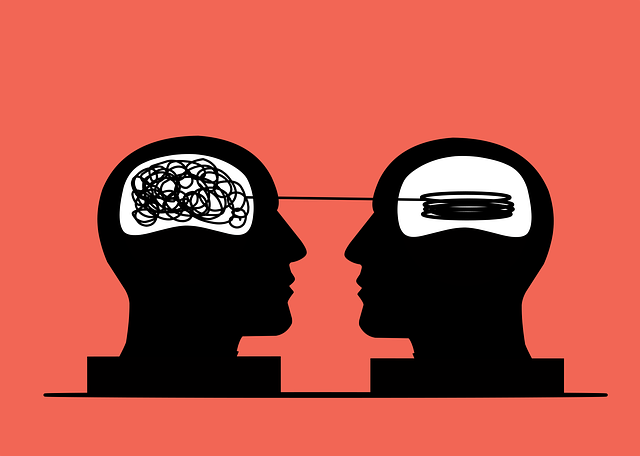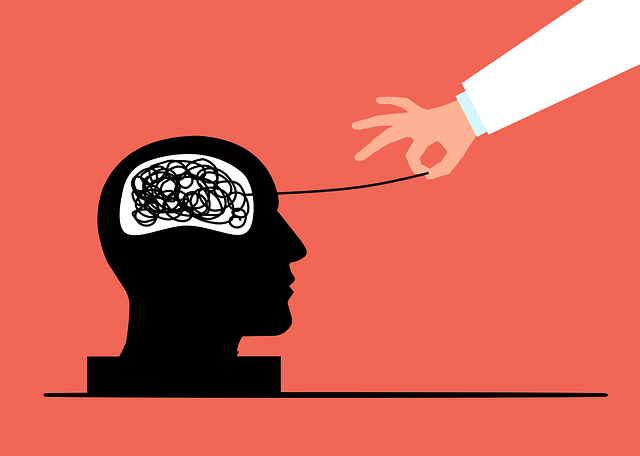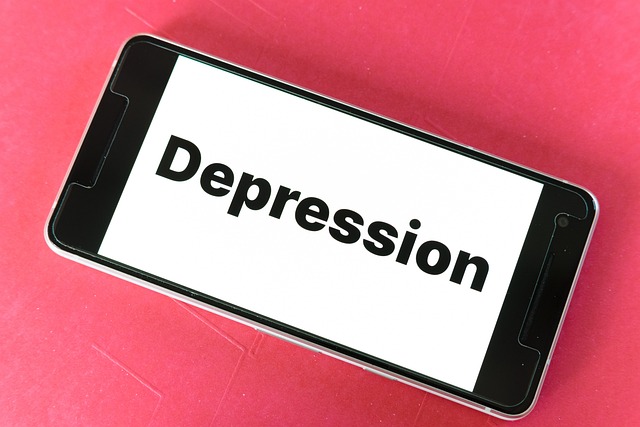Cognitive-behavioral therapy (CBT) is an effective stress relief therapy that targets negative thought patterns and behaviors. By understanding the mind-body connection, CBT promotes healthier coping mechanisms, enhances resilience, and improves quality of life. Through structured sessions, individuals learn to identify distorted thinking, replace it with positive perspectives, and adopt practical coping strategies like problem-solving, relaxation techniques, and mindfulness practices. This approach leads to better emotional well-being, reduced stress levels, and improved overall mental health.
Stressed out? You’re not alone. Discover how Cognitive-Behavioral Therapy (CBT), a proven stress relief therapy, can transform your well-being. This article explores the profound impact of stress on mind and body, introducing CBT as an effective approach. We delve into its core principles, empowering you to identify and challenge negative thought patterns. Learn powerful techniques for stress management and discover how to seamlessly integrate CBT into daily life, reaping long-term benefits and achieving lasting calm.
Understanding Stress and Its Impact on Mind and Body

Stress is a universal human experience, but its impact on our mental and physical well-being can be profound. It’s more than just feeling overwhelmed; it’s a complex response triggered by various factors in our environment or thoughts. When we perceive a situation as stressful, our bodies initiate a cascade of physiological changes, often referred to as the “fight or flight” response. This involves increased heart rate, heightened alertness, and the release of stress hormones like cortisol. Over time, chronic stress can lead to significant health issues, affecting everything from our immune system and digestion to sleep patterns and emotional resilience.
Cognitive-behavioral therapy (CBT) for stress relief offers a powerful approach to managing this modern-day challenge. CBT helps individuals identify and challenge negative thought patterns and behaviors contributing to their stress. By understanding the mind-body connection, CBT encourages healthier ways of thinking and acting, enabling people to respond to stressful situations with greater calmness and clarity. This therapy is about gaining control over your reactions, ultimately fostering resilience and a improved quality of life.
Introduction to Cognitive-Behavioral Therapy (CBT)

Cognitive-behavioral therapy, or CBT, is a form of stress relief therapy that focuses on identifying and changing negative thought patterns and behaviors. It’s based on the understanding that our thoughts, feelings, and actions are interconnected—our thoughts influence our emotions and behaviors, which in turn affect how we perceive and interact with the world around us.
CBT helps individuals challenge and replace unhelpful or distorted thinking with more realistic and positive thoughts, leading to healthier emotional responses and improved coping strategies. By learning to manage their thoughts and feelings, people can reduce stress and anxiety, enhance well-being, and develop effective problem-solving skills for a happier, more fulfilling life.
The Core Principles of CBT for Stress Management

Cognitive-behavioral therapy (CBT) is a highly effective approach to managing stress, focusing on the relationship between thoughts, feelings, and behaviors. At its core, CBT for stress relief therapy challenges negative or distorted thinking patterns that contribute to overwhelming stress levels. By identifying and changing these thought processes, individuals can gain a more balanced perspective, leading to reduced stress and improved emotional well-being.
The key principles of CBT emphasize the active participation of the individual in their own recovery. It involves teaching practical coping strategies, such as problem-solving skills, relaxation techniques, and mindfulness practices. Through structured sessions, CBT helps individuals recognize unhelpful behaviors and thought patterns, replacing them with healthier alternatives. This process enables better stress management, fostering resilience and a sense of control over one’s emotional responses.
Identifying and Challenging Negative Thought Patterns

Negative thought patterns can significantly contribute to feelings of stress and anxiety. Cognitive-behavioral therapy (CBT) plays a pivotal role in identifying these harmful patterns, which often manifest as distorted perceptions or irrational beliefs. By bringing these thoughts into awareness, individuals begin to question their validity, challenging them with more realistic and balanced alternatives. This process is crucial for stress relief therapy, as it empowers people to detach from negative self-talk and develop healthier thinking habits.
Therapists guide clients through this journey by helping them recognize unhelpful cognitive distortions such as all-or-nothing thinking, catastrophizing, or jumping to conclusions. Once identified, these patterns can be systematically challenged using evidence-based techniques. This involves examining the evidence for and against the negative thoughts, considering alternative explanations, and engaging in reality testing. Through this structured approach, CBT offers a powerful tool for managing stress by reshaping one’s mental landscape and fostering more adaptive behaviors.
Techniques and Strategies within CBT for Stress Relief

Cognitive-behavioral therapy (CBT) offers a range of powerful techniques and strategies to combat stress. At its core, CBT focuses on identifying and changing negative thought patterns that contribute to stressed states. By challenging and reframing these thoughts, individuals can gain a more balanced perspective, leading to reduced stress levels. One key technique is cognitive restructuring, where therapists help clients recognize distorted thinking and replace it with more realistic, positive alternatives.
Additionally, CBT incorporates various relaxation techniques such as deep breathing exercises, progressive muscle relaxation, and mindfulness meditation. These practices promote a sense of calm and help individuals manage physical symptoms associated with stress. Through structured activities and homework assignments, CBT encourages the development of healthier coping mechanisms, enabling clients to effectively navigate stressful situations and enhance their overall well-being.
Integrating CBT into Daily Life and Long-term Benefits

Integrating cognitive-behavioral therapy (CBT) into daily life is a powerful tool for managing and overcoming stress. CBT encourages individuals to identify and challenge negative thought patterns, replacing them with more realistic and positive ones. This process empowers people to face stressful situations head-on, enabling them to develop effective coping strategies that enhance their overall well-being. By practicing CBT techniques consistently, such as mindful awareness, cognitive restructuring, and problem-solving, individuals can experience significant improvements in stress relief over time.
Long-term benefits of CBT for stress include increased resilience, better emotional regulation, and improved overall mental health. Regular CBT sessions help individuals develop a deeper understanding of their thought processes, allowing them to navigate challenging situations with greater ease. This self-awareness fosters a sense of control, reduces the impact of stressful events, and promotes a more balanced and positive mindset. As a result, many people who incorporate CBT into their lives find that they are better equipped to handle life’s demands, leading to improved quality of life and increased satisfaction.
